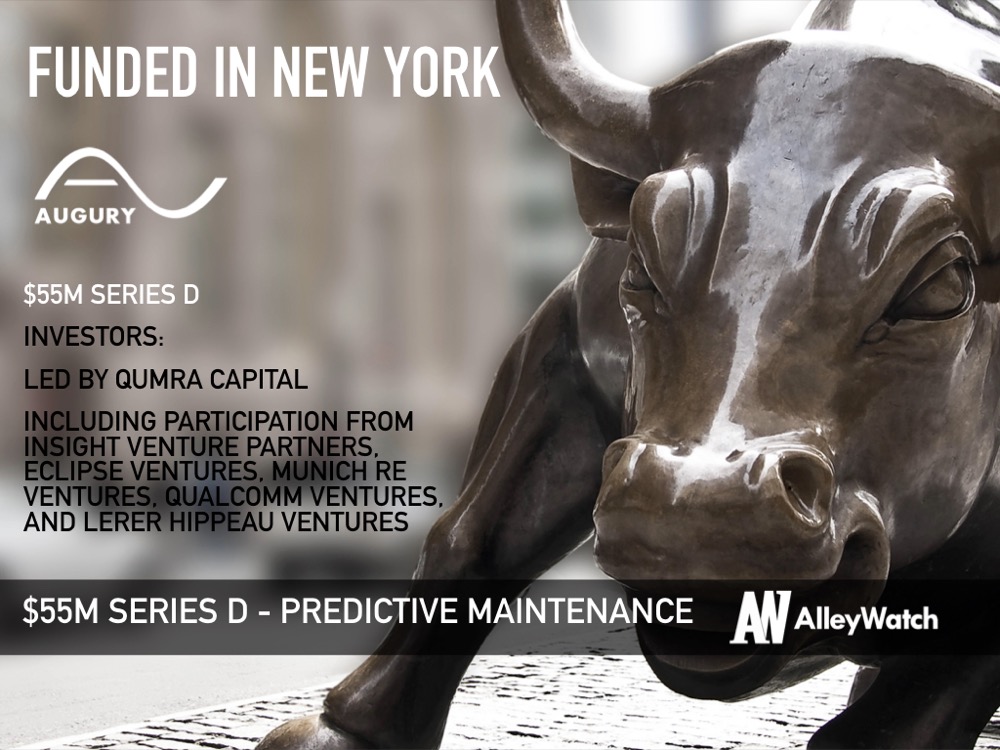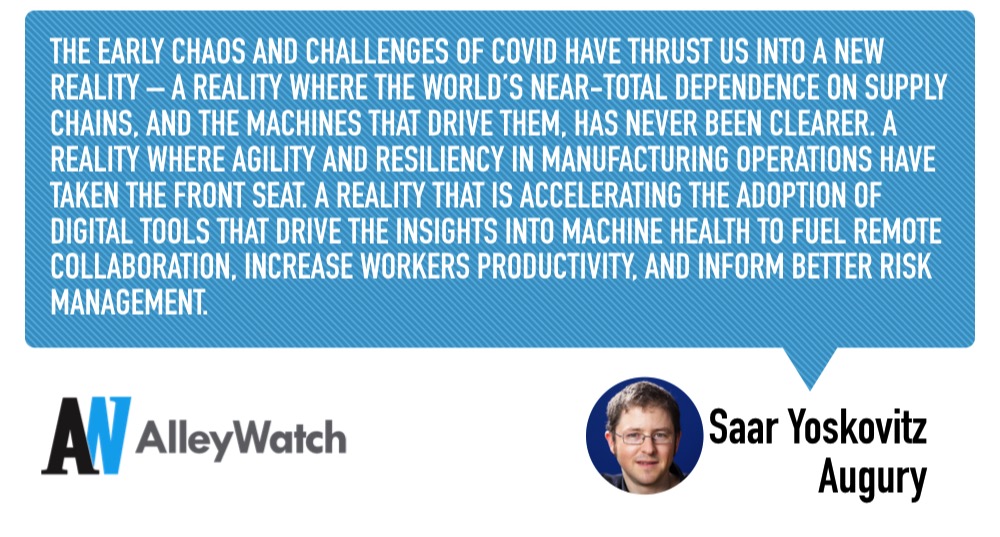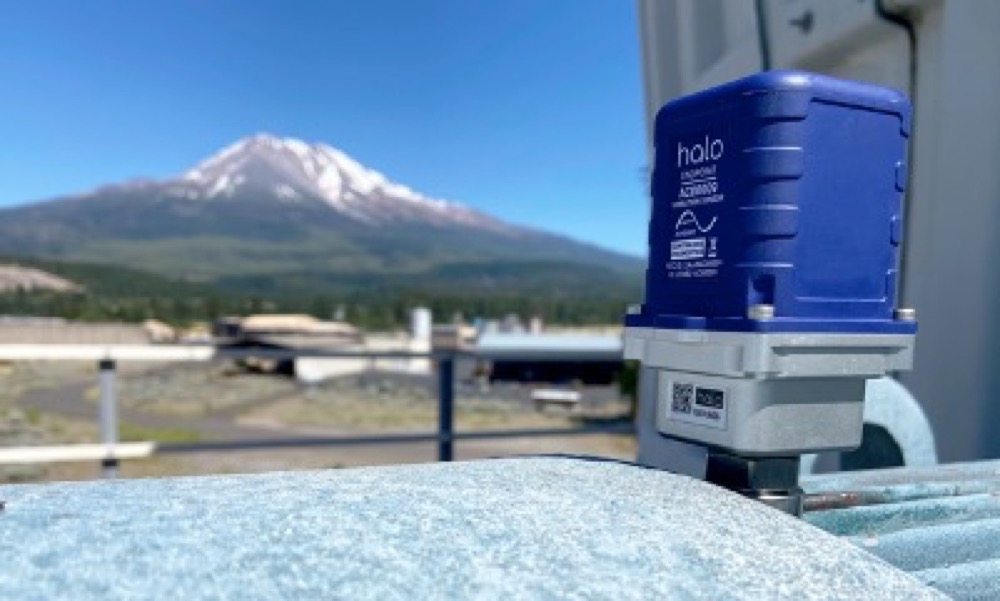We often forget to listen more and talk less when dealing with problems. The same happens to be true for industrial machinery. Augury is the predictive maintenance platform that “listens to machines” to detect what is wrong using IoT sensors to understand acoustic signals to troubleshoot. Augury has compiled the largest library of machine fault data and uses this data to train its AI model. This data repository grows as more devices use Augury’s solution. Currently, there are 70K+ machines that are protected by Augury, including the machinery of 25 Fortune 500 manufacturers, 3 of the top 5 CPG companies, the 3 top pharma companies, and 8 of the top 20 food manufacturers.
AlleyWatch caught up with Cofounder and CEO Saar Yoskovitz to learn more about Augury’s platform, impressive, growth in this trillion-dollar industry, and latest funding round that brings the company’s total funding to $106M since its founding in 2011.
Who were your investors and how much did you raise?
$55M in Series D funding. This Series D round was led by Qumra Capital, a leading late-stage venture capital firm based out of Israel. It includes participation from existing key investors, including Insight Venture Partners, Eclipse Ventures, Munich Re Ventures, Qualcomm Ventures, and Lerer Hippeau.
 Tell us about the product or service that Augury offers.
Tell us about the product or service that Augury offers.
Augury offers Machine Health-as-a-Service. We provide a full-stack solution from IoT-enabled sensors to specific outcomes and actionable insights that predict and help prevent unplanned industrial equipment failures and downtime. Our diagnostics are so accurate they are guaranteed by Munich RE.
What inspired the start of Augury?
The idea for Augury was sparked by a trip that my cofounder Gal Shaul took while working with a medical device company. He was sent to fix a bug in one of the machines and was able to identify the issue just by the sound the machine was making. It ended up just being a fan that was simply dirty and needed to be cleaned. Gal and I both have technology backgrounds, and I had studied machine learning on acoustic data while at university. We set to work creating software that could “listen” to machines and diagnose them as Gal did. From this, Augury was born.
How is Augury different?
Augury has built the largest library of machine fault data, which is used to diagnose faults and train our AI model. This library continues to grow exponentially as more of our devices are installed on industrial machines every day. Utilizing this repository of data, we’ve developed the most accurate Machine Health solution on the market. This is why we are able to guarantee our results – something no one else is capable of doing.
What market does Augury target and how big is it?
We address a $1.6T problem, which is downtime associated with manufacturing equipment. According to IoT Analytics in 2019, the Predictive Maintenance market is growing at a 40% CAGR and will be a $23.5B market by 2025. We also have value propositions for adjacent markets such as asset management, which doubles that potential market size.
What’s your business model?
We provide end-to-end machine health as a service, from the sensors that collect data on the machines themselves to the analytics and platform to communicate and act on the alerts and insights we deliver. It’s a SaaS model, with a combination of pricing per machine and enterprise fees for overall program management and advanced services.
How has COVID-19 impacted the business?
The early chaos and challenges of COVID have thrust us into a new reality – a reality where the world’s near-total dependence on supply chains, and the machines that drive them, has never been clearer. A reality where agility and resiliency in manufacturing operations have taken the front seat. A reality that is accelerating the adoption of digital tools that drive insights into machine health to fuel remote collaboration, increase workers’ productivity, and inform better risk management.
What was the funding process like?
The funding process went relatively quickly, largely because we had existing relationships with our current and prospective investors, so the ‘remote’ approach was not as much of a blocker as it could have been for earlier stage companies. The clear tailwind that COVID provided for a fast DD and conviction from the investors.
What are the biggest challenges that you faced while raising capital?
One of our unique challenges due to COVID was the deployment of our solution. We have a physical product that requires us to visit factories to install it, and in March everyone went into lockdown. We quickly pivoted to self-installation by our customers, coupled with local delivery partners that don’t require air travel. While our bookings have accelerated, the ability to recognize revenues was paused for a bit.
What factors about your business led your investors to write the check?
Customers see clear ROI in a matter of months, and significant long-term impact on maintenance and uptime. We have an established customer base that are seeing tangible benefits every day. Some of our most recognizable customers are Colgate-Palmolive, Hershey’s, Danone, Heineken, and more. Companies utilizing Augury include 25 Fortune 500 manufacturers, 3 of the top 5 CPG companies, the 3 top pharma companies, and 8 of the top 20 food manufacturers.
We’ve had impressive revenue growth, and top-notch NDR (Net Dollar Retention) at 400% YoY for our industrial customers.
What are the milestones you plan to achieve in the next six months?
By the end of the year, we expect contracted ARR to have increased threefold over the course of 2020 compared to 2019 into the double-digit millions.
What advice can you offer companies in New York that do not have a fresh injection of capital in the bank?
It’s time to reimagine how we work. COVID accelerated different trends and threw us all into a new reality. We can’t imagine going back to the same 9-to-5 in the office – and therefore our physical footprint will need to change as well. While we plan to stay in NY as our HQ, the role of the office will change as well as the structure of it.
It’s time to reimagine how we work. COVID accelerated different trends and threw us all into a new reality. We can’t imagine going back to the same 9-to-5 in the office – and therefore our physical footprint will need to change as well. While we plan to stay in NY as our HQ, the role of the office will change as well as the structure of it.
Where do you see the company going now over the near term?
Our main focus at the moment is on expanding our global deployment network so we can support our customers wherever they want us to. Our network of partners includes ProPap in Germany, Conversion in Finland, Pluriservice in Italy, Fuse Iot in Latin and South America, and 42 North for additional coverage in North America. This combined with our customers that have facilities around the world has created a strong foundation for continuing to build our global footprint.
What’s your favorite outdoor dining restaurant in NYC?
The Smith.
You are seconds away from signing up for the hottest list in New York Tech! Join the millions and keep up with the stories shaping entrepreneurship. Sign up today






